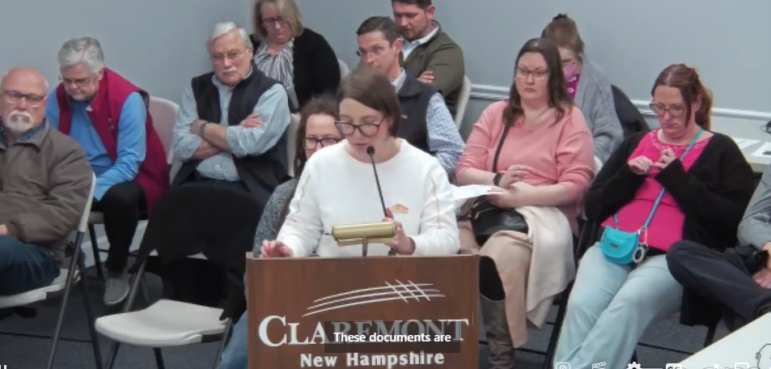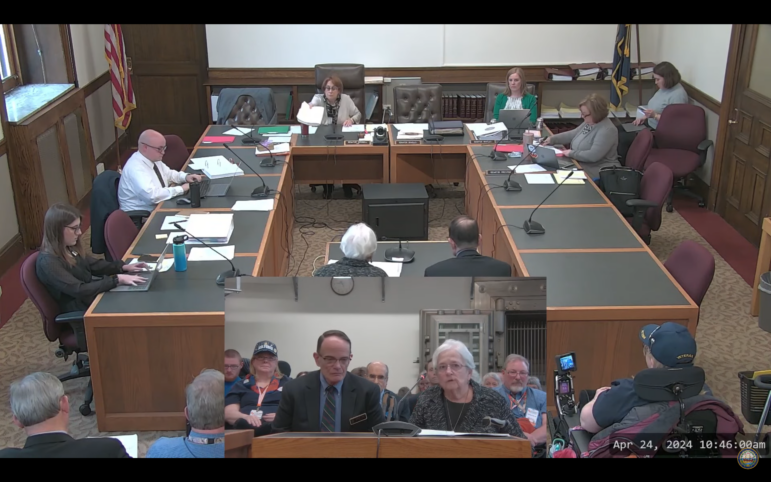
Arnie Alpert is a retired activist, organizer, and community educator long involved in movements for social and economic justice. Arnie writes an occasional column Active with the Activists for InDepthNH.org.
If you’re going to take a quote from “I Have a Dream,” at least read the entire speech. (Watch speech on YouTube at end of this column.)
By ARNIE ALPERT, Active with the Activists
When New Hampshire House Republican leaders quoted Martin Luther King, Jr. in their defense of the state’s “Divisive Concepts” or “Non-Discrimination” law last week, it wasn’t the first time King’s words were used to imply something quite different from what he intended.
All the law does, according to a statement from GOP Majority Leader Jason Osborne, R-Auburn, and Deputy Leader Jim Kofalt, R-Wilton, is prohibit “teaching children that some of them are inherently racist based on their skin color, sex, race, creed, etc. Is that not what Dr. Martin Luther King, Jr. called for when he said, ‘I have a dream that my four little children will one day live in a nation where they will not be judged by the color of their skin but by the content of their character?’”
To that I say, no, that’s not what he called for, not if one takes the time to review the entirety of the speech now known as “I Have a Dream.”
Since all sides to this controversy say they want history portrayed accurately, a review is in order, starting with the New Hampshire law in question. The statute began its life in 2021 as HB 544, sponsored by Rep. Keith Ammon, R-New Boston, and co-sponsored by Rep. Osborne, aiming to bar teachers, other public officials, and state contractors from the “the dissemination of certain divisive concepts related to sex and race in state contracts, grants, and training programs.”
The proposal was not of local origin. According to The First Amendment Encyclopedia, “’Divisive concepts’ legislation emerged in multiple states beginning in 2021, largely fueled by conservative legislatures seeking to limit topics that can be explored in public school classrooms. The laws have been driven in large part by opposition to critical race theory, an academic theory that says racism in America has largely been perpetuated by the nation’s institutions.” Those proposals followed an Executive Order on “Combating Race and Sex Stereotyping” issued by President Donald Trump the previous year, which blocked federal agencies from providing diversity, equity, and inclusion training “rooted in the pernicious and false belief that America is an irredeemably racist and sexist country; that some people, simply on account of their race or sex, are oppressors.”
In its statement of purpose, the order cited the same brief extract from Dr. King’s 1963 speech, talked about the “significant progress” made in the intervening 57 years, and went on to criticize diversity training conducted in a variety of federal agencies. It listed nine “divisive concepts” which would be prohibited, among them were that “the United States is fundamentally racist or sexist,” and that anyone “should feel discomfort, guilt, anguish, or any other form of psychological distress on account of his or her race or sex.”
Trump’s order was deemed unconstitutional by a federal judge and later rescinded by President Joseph Biden, but it’s intent and language were picked up by legislators in several states, including New Hampshire.
The Trump order’s list of “divisive concepts” was repeated almost word-for-word in Rep. Ammon’s bill, which received considerable attention from supporters, several of whom tried to recruit Dr. King among their ranks. For example, a letter-to-the-editor published both in the NH Union Leader and Concord Monitor, stated, “HB 544 eliminates the use of Critical Race Theory (CRT) in the discussion of issues of race and the other ‘isms’ we are addressing today.” It went on, “America has been moving in that direction of Dr. King’s idea for the last 50 years. We want to teach our children and share with our employees that we want to act in the way Dr. King has prescribed, not the CRT idea of systemic racism.” Speakers made similar comments at a State House rally that spring, where one participant reportedly carried a sign reading, “Teach MLK, Not CRT.”
But after a public hearing and extensive work in committee, HB 544 was tabled on the House floor.
The proposal was not dead, however. Instead, it sprang back to life as a provision in the House version of the state budget. Now titled, “Right to Freedom from Discrimination in Public Workplaces and Education” and with a somewhat reduced menu of concepts to be prohibited in schools and other public workplaces, the Finance Committee inserted it into HB 2, the budget trailer bill. Under this version, “any person” who believed they had been aggrieved by violation of the law could pursue legal remedies.
When Senate GOP leaders heard that Governor Sununu was not happy about the “Freedom from Discrimination” language, Senator Jeb Bradley re-re-wrote it, turning it into what is now the non-discrimination statute. Once again the proposal’s scope was reduced, for example limiting it only to conduct of teachers. But it did contain a provision that “any person claiming to be aggrieved by a violation of this section, including the attorney general, may initiate a civil action against a school or school district in superior court for legal or equitable relief, or with the New Hampshire commission for human rights.”
It’s worth noting that other than in the original public hearing on HB 544, at no time did the House or Senate provide a meaningful opportunity for public comment on the proposal, whose final details were worked out in the rapid deliberations of a House-Senate conference committee.
Following adoption of the budget, with the Bradley version intact, the NH Department of Education added a link to its website encouraging parents to report teachers they believe are disseminating ideas banned under the “Non-Discrimination” law. A right-wing group promised $500 to the first family that files a successful complaint.
Given what we might call the “original intent” of its sponsors, it’s no surprise that some teachers are fearful that “any member” of the public might put their jobs at risk if they teach about the ways in which African Americans and other people of color have faced systematic discrimination.
It was the clamor for laws that would end systematic discrimination that brought a few hundred thousand people to Washington DC on Aug. 23, 1963, for the March for Jobs and Freedom. Inspired by A. Phillip Randolph, president of the Brotherhood of Sleeping Car Porters, the rally marked the 100th anniversary of the Emancipation Proclamation which ended slavery in the states of the Confederacy. It took place shortly after demonstrations in Birmingham, Alabama brought inescapable attention to the brutality needed to maintain racial segregation. By emphasizing jobs and freedom, the march sought to advance an agenda for job training and an end to workplace discrimination as well as voting rights and a civil rights bill that would end segregation in schools and public accommodations. Dr. King was one of several major speakers.
A century after emancipation, Dr. King said, “the Negro still is not free; one hundred years later, the life of the Negro is still sadly crippled by the manacles of segregation and the chains of discrimination.” Referring to the Declaration of Independence, Dr. King said, the founders of the nation had issued “a promissory note to which every American was to fall heir.”
“It is obvious today that America has defaulted on this promissory note insofar as her citizens of color are concerned,” he charged, saying that instead of following through on a promise, America had issued a bad check. “We’ve come to cash this check, a check that will give us upon demand the riches of freedom and the security of justice,” Dr. King said.
Seeking to rescue the nation from “the quicksands of racial injustice,” including “the unspeakable horrors of police brutality,” Dr. King said, “There will be neither rest nor tranquility in America until the Negro is granted his citizenship rights. The whirlwinds of revolt will continue to shake the foundations of our nation until the bright day of justice emerges.”
Looking back, there is no doubt Dr. King was addressing the collective and systematic discrimination experienced by African Americans, a view fully consistent with what HB 544 backers decried as critical race theory.
Yes, progress has been made since 1963. But the realities of police brutality, extreme inequality, and denial of voting rights which Dr. King condemned are still with us. Dr. King can still help us find the way forward if we take the time to study what he actually meant.





